Which radio programming strategies work anywhere? An interview with veteran music radio PD Sam Zniber, who’s programmed and consulted music stations on 5 continents.
Different radio markets need different programming strategies. But the best practices for music, morning, marketing, talent, imaging and processing can be used to build a unique, great-sounding product for your target demo, regardless where you are. More than anything, a brand should have a soul. “Many radio stations aim a bit too much on science.”
“It was my dream to become PD
of a radio station in the US”

Music radio program director & consultant Sam Zniber has always loved American radio (image: Sam Zniber)
Find programming inspiration worldwide
Sam Zniber (born 1969) fell in love with radio as a 10-year-old kid, when he was living in California with his parents. During the early 80s he used to listen to music radio every day. “I loved how American radio was designed, such as the music flow and how production elements were perfectly timed on song intros. Everything was working together, and there was this sense of one brand; one product. It was my dream to become PD of a radio station in the US.”
 Start in radio early
Start in radio early
Two years later, the family moved to Montpellier in France, where commercial radio was just starting out. FM broadcasting had been the exclusive territory of government-funded public broadcasters for many years before. Compared to American radio, the new independent stations sounded like amateurs to him- even FM 7, which was the number 1 in Montpellier. The ambitious 12-year-old Sam decided to seize the opportunity.
Develop your own vision
“I called the station and asked for the general manager. I asked him for a meeting, because I wanted to be on air.” He actually got the meeting, and was able to share a personal impression of how a good station sounds. “It was what I heard in the US. After discussing for half an hour, he gave me a weekend show”. Zniber did that show for seven years. During that time, FM 7 became a part of NRJ (acronym of the French word for ‘energy’), now a worldwide-franchised CHR brand. At the age of 19, he moved from Montpellier to Paris, to become a presenter and the production director for NRJ France.
“The emotion factor
starts in the radio station”
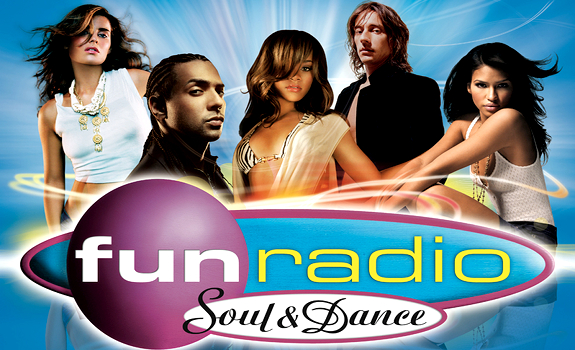
Sam Zniber believes that fun in a team creates joy on the air and pleasure for the listener (image: RTL Group)
Work on different continents
He later joined NRJ-rival Fun Radio as well as RTL2 as their PD, and went overseas to gain international programming experience at Galaxy in Manchester (now Capital FM) and Mix 106.5 in Sydney (now KIIS 1065). Sam Zniber has overseen 23 radio brands as group program director for Lagardère, and consulted for Radio Intelligence. The adventurist was then living the dream as PD of MAGIC 102.7 (Miami’s Greatest Hits) in sunny Florida, the #11 market in the US. With a seventh position this half Hispanic area, the Classic Hits format does pretty well. A steady growth led to a 5.1 share in December 2013 (from 2.8 in April 2012).
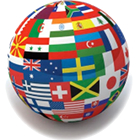 Adapt to local markets
Adapt to local markets
As a globetrotting PD and consultant he learned that every market is really different. It’s crucial to understand the local environment. Not just your target audience, but also your on-air staff. “Be humble enough to shut up and listen. You’ve got to plug yourself into the local pop culture and into the mindset of your team.” But basics are the same everywhere: “When you apply the basics with passion, you’ll get results”.
Apply universal radio basics
Zniber mentions the following basics for successful radio programming anywhere in the world:
• Know your target audience: “The relation between a program director and a radio audience is like a love story. It’s not about me; it’s about them. If you meet someone and you fall in love, you need to learn about that person if you want to create a good relationship.”
• Optimize your 3M pillars: music, morning, marketing. The morning show should have well-defined role characteristics. “I’ve been a student of Dennis Clark for 20 years.” [See: Morning Show Success Depends On Radio Talent]
• Follow your game plan: “I think long-term success in radio is more about strategy than tactics”, therefore he says that it’s important to build a coherent and consistent on-air product. “There’s a tendency to make changes all the time, but you have to stick with what you’re doing.”
• Make your team happy: “Create a good feeling in the radio station if you want your audience to have a good feeling while they’re listening. How you’re building your product and make sure that everything flows together matters as well, but the emotion factor starts in the radio station.”
“The best teams win”

Having a great team and (sticking to) a good plan can make the difference in a competitive market (image: ARN)
Cultivate a pleasant atmosphere
What have you learned in terms of building a winning morning show?
“What matters most, is the interaction between the hosts. A morning show is like a breakfast table. Are you going to make it cold and boring, or welcoming and fun? When I’m a guest at your house for breakfast and everyone in your family interacts in a positive and genuine way, I feel welcome. A station should be like a family that welcomes other people to become a member.” Sam Zniber doesn’t find it crucial to let every host represent (a part of) the audience. “They should reflect the same passion, but don’t need to have the same age. There are a lot of amazing jocks who are 50 years old, and aim for a target that is 12-18 years.”
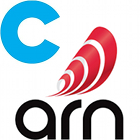 Keep following your plan
Keep following your plan
To ignore industry hype and peer pressure and stay on course is a lesson he learned in Sydney, one of the most competitive markets in the world, while programming Mix 106.5 for Clear Channel‘s Australian Radio Network. They launched a Soft AC for females 25-54, while there was a hype towards young & hip formats. “We didn’t care and took the station from a 6.0 to a 9.3 share. We made the ‘coolness factor’ part of the imaging package.”
Build winning radio teams
Zniber makes clear that any PD needs to have a great team and management backup. It was the case in Sydney, where they were up against a strong competition – DMG Radio with Nova, and Southern Cross Austereo with 2Day FM. “Both great teams, and great brands. I was lucky to work with amazing people, like CEO Bob Longwell and Group PD Jeremy Millar. We had very constructive discussions and brainstorms.” What are his criteria for hiring radio people? “Passion and desire”, he replies immediately. “And you have to make sure that the person in front of you is balanced. The best teams win.”
“In a PPM world,
your P1 listeners are making you”

Live events like open air concerts are a great way to meet members of your core audience (image: MAGIC 102.7)
Understand your P1 audience
Electronic audience measurement like PPM makes that program directors have more data available than ever. Some tend to focus on tune-out factors, while it may also be good to look at what triggers people to tune in. What are your major insights from looking at PPM data with a magnifying glass?
“What I’m mainly doing, is look at how P1 listeners behave. In a PPM world, your P1 listeners are making you. It’s about creating a product that they are passionate about, and making sure they enjoy everything – your sound processing, imaging package, music flow, songs, jocks, and so on”, Sam Zniber explains. To stay in touch with the core audience of MAGIC 102.7, he found it important to go beyond research and also meet listeners outside focus groups; during concerts and events like the annual Love-In Party In The Park.
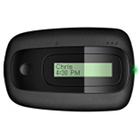 Play the ratings game
Play the ratings game
How do you experience working with PPM metering vs. diary surveys?
“It’s like a game where the same rules apply to everybody. If you understand the rules, respect the rules and play the game, you have a chance to win it. Spending time on complaining [about the often-discussed sample rates and statistical relevance, TG] won’t help you win the game.”
Use flow-accelerating station imaging
What are best practices for radio programming in PPM markets, based on data you’ve seen?
“What is true for a specific target audience, music format and broadcast area does not apply to other ones. I don’t think there are many generic tricks.” In terms of radio programming tactics for Portable People Meter markets, he does find it crucial to use station imaging that will enhance your program flow – not slow it down. “The music flow is really important in PPM. Putting things in between songs doesn’t really work, but putting imaging on the intro of songs can really help your Time Spent Listening in PPM.” Zniber confirms that inside a music sweep, power intros therefore work better than (long) jingles if you’re in a PPM market. “90 percent of my imaging package is based on power intros.”
“Many radio stations aim
a bit too much on science”
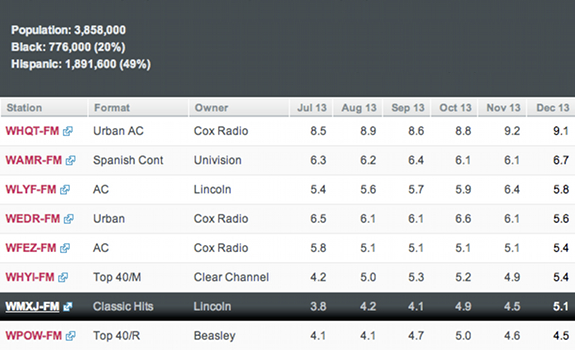
Optimizing both science and art behind your product can increase your PPM ratings significantly (image: All Access)
Be product-focused vs. brand-oriented
PPM markets require a specific programming approach: “In a diary world, you only work on the perception that people have of you, so they have your brand top of mind.” [It makes people remember you when they fill out their diary – and sometimes even think that they heard you, while they actually heard another radio station, TG]. Sam Zniber: “In a diary world, the brand is more important than the product. In a PPM world, the product is more important than the brand. You work for a specific audience, and make let them listen as long as possible. In a PPM world, you can’t have a weak moment. In a diary world, you can! Because all you’re focusing on is that people remember your brand when they’re going to be asked.”
 Encourage creative thinking & doing
Encourage creative thinking & doing
What does it mean for their creativity when people can’t afford themselves too much experiments?
“I don’t think that different rules make people less creative. People are doing that themselves. In a radio world that is very corporate, some might be afraid to take a chance. But that can be true in a both a PPM and a diary world.”
Avoid reacting to competitors
Even if PPM was a game changer (because the product has become more important than the brand), the bottom line remains the same. You have to create a great-sounding station for your target demographic. Zniber: “Radio is a mix of art and science. If there’s a good balance, you have a good chance to succeed, because many radio stations aim a bit too much on science, and too less on arts. You need to be creative to become successful. I don’t care what the others are doing.”
“Nothing can replace radio”
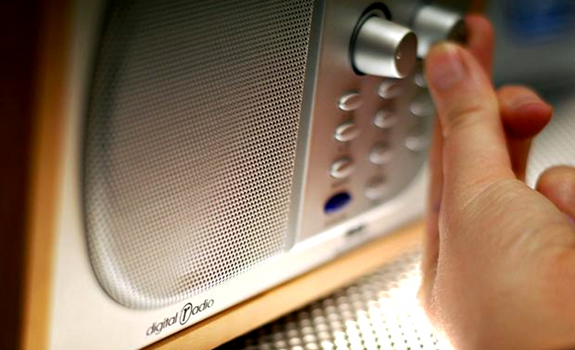
International program director and radio consultant Sam Zniber predicts that radio will only benefit from digital and social media, and that streaming services replace people’s music collection – not their radio listening (image: Pure)
Match your programming & sound
What are your best practices for station imaging and on-air sound?
“Station imaging needs to respect your music flow, and has to sound bigger than life! Like the 20th Century Fox jingle in front of a movie, your on-air sound needs to be very exciting.” Sam Zniber smiles when he adds that some imaging producers may confuse excitement with noise. Another important aspect is audio processing: “It needs to give your listeners an intense dose of pleasure. It’s not necessarily about being the loudest. Like with everything else, you’ve got to know your target so well that you feel the kind of sound that they love.” His advice is to keep their music preference in mind: “A target that likes Electro Rap won’t have the same taste as one that likes Hall & Oates. Still, you need to deliver a personal sound that makes your station unique.”
 Expand radio through digital
Expand radio through digital
How do you see the future of radio in this digital & social media age?
“Digital and social media are radio’s friends. The more we will be present on new platforms, the more chances we have to expand and develop our radio brands. Pandora, Deezer and iTunes Radio didn’t replace radio; they’ve only replaced CD collections. Radio is free, local and live, and those qualities will be expanded through these new tools.”
Create an emotional experience
Zniber loves radio because it’s a theatre of the mind. “Radio is an exciting medium, like a book! You can tell stories and share emotions. There’s an expression from Hollywood that says: make them cry, make them laugh, take their money [laughs]. Radio is about finding ways to make people feel something. When your listeners can feel your passion, you’ll start to have fans. I see a very bright future for radio. We’re in the business of audio, and that will continue to be a medium. Nothing can replace radio.”





One of the best articles I’ve read about radio programming.